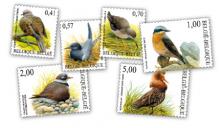Farmland bird decline in the UK was 9% between 2010-15
Birds living and breeding on the UK’s farmland have seen numbers decline by almost a tenth in five years, official figures show. Farmland bird populations have declined by 56% since 1970, largely due to agricultural changes including the loss of mixed farming, a switch to autumn sowing of crops, a reduction in hay meadows and the stripping out of hedgerows.










